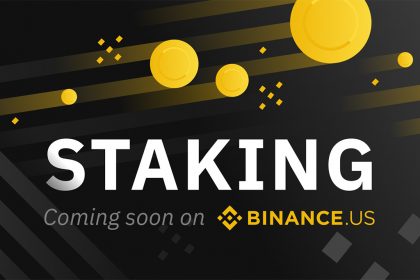Binance US will provide its customers with ALGO and ATOM staking options to compete in this market with Kraken and Coinbase that already offer Tezos (XTZ) staking.
Binance sees the growing demand on staking platforms and solutions and wants to be ahead of the curve in this ‘post-PoW world’.
Binance announced that starting 1 February 2020 it will allow the U.S. customers of its dedicated platform ‘Binance US’ to stake Cosmos (ATOM) and Algorand (ALGO) tokens with Proof of Stake algorithm as the basis.
Now, Binance offers trading in 28 cryptocurrencies, including the ones you never heard of. The exchange wants to enter the U.S. staking market controlled by Kraken and Coinbase that already offer customers Tezos (XTZ) staking.
What will be their return rate per coin? Binance didn’t specify any details, while Tezos staking in the competitor’s camps brings 6% of pure profit to the stakeholders. Catherine Coley of Binance US says that the platform plans to add several different PoS coins as soon as the staking service gains traction among users:
“Staking is just one of the many attractive ways we are bringing new people into the digital asset marketplace. We consider this another step towards achieving our goal of financial inclusion for an ever-growing pool of people.”
Regulatory Framework in the U.S. Keeps Local Players Away from Market Uncertainty
Binance US will become the first crypto exchange in the United States with staking enabled for more than just one coin.
Many of the online platforms offer staking to customers from around the world. Some of the sites claim support for hundreds of PoS tokens. Some want users to do KYC to comply with the law and distinct users from the U.S. from all the rest.
However, the profit model of such offers is not what a user may get in reality. The staking rewards in different coins vary. It depends on the website used to stake or the capacity of a node you run on your PC or via cloud.
Staking is the process of holding a substantial amount of coins in a locked position, often named ‘staked coins’. You typically cannot stake coins just by holding them in the wallet. PoS and DPoS currencies use the special tricks within the wallets and on exchanges to make staking happen. The usual Bitcoin nodes that verify and broadcast the transactions replaced in PoS with staking nodes.
This means you must have a good Internet speed, some amount of coins to stake and a powerful PC. This is needed to create new blocks and decentralize the network. The staking process, however, is not as dependent on hardware as in the case of mining, which makes it attractive to non-mining users and collectors with a low budget.
next